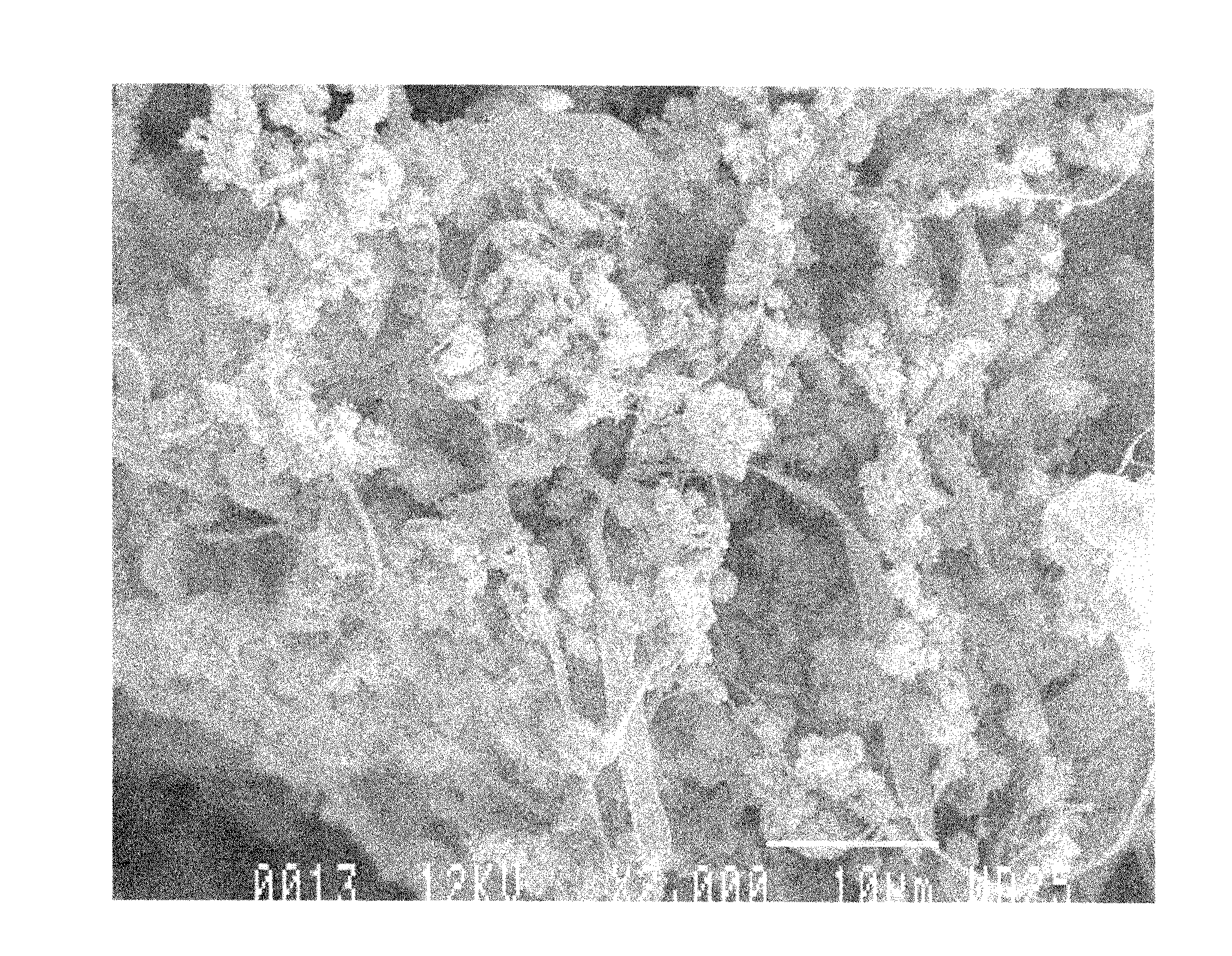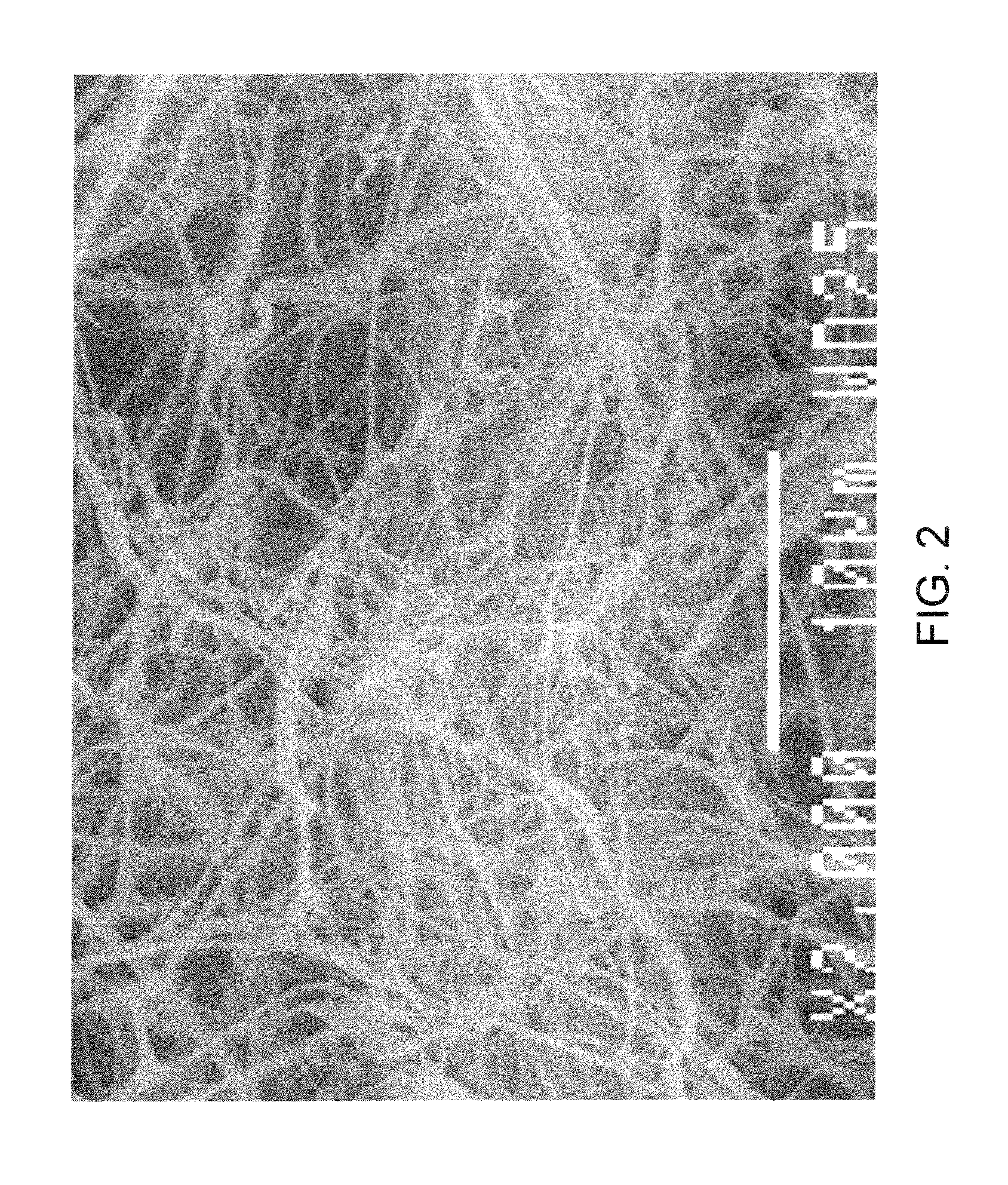Cellulose-reinforced high mineral content products and methods of making the same
a technology of cellulose and mineral content, applied in the field of pulp furnish, can solve the problems of high petroleum oil-based polymer amount, high density, low stiffness, etc., and achieve the effects of enhancing the consolidation of paper structure, enhancing filler fixation, and high surface area
- Summary
- Abstract
- Description
- Claims
- Application Information
AI Technical Summary
Benefits of technology
Problems solved by technology
Method used
Image
Examples
example 1
[0083]The paper samples of FIGS. 6a and 6b produced during the pilot papermachine trial were compared with a commercial fine paper (copy grade). The highly filled sheets had strength and stiffness similar to those of typical fine papers made from kraft pulp having only 20% filler. Table 1 show the testing results. All chemical % dosages are based on weight of dry materials.
TABLE 1Comparison of a commercial paper with trial papersCommercial fineTrial productTrial productSamplepaper 75 g / m275 g / m277 g / m2Filler content in sheet, %204050CD Gurley Stiffness, mgf677076MD TEAindex, mJ / g457489409
example 2
[0084]To further improve the wet-web strength of super filled sheets, cellulose fibrils CNF was be incorporated into the furnish composition. In one laboratory experiment, CNF was produced according to U.S. Ser. No. 61 / 333,509, Hua et al. The CNF was further processed to enable the surface adsorption of chitosan (a natural cationic linear polymer extracted from sea shells). The total adsorption of chitosan was close to 10% based on CNF mass. The surface of CNF treated in this way carried cationic charges and primary amino groups and had surface charge of 60 meq / kg. The surface-modified CNF was then mixed into a fine paper furnish at a dosage of 2.5%. The furnish contains 40% bleached kraft pulp (softwood: hardwood=25:75, refined to CSF 230 ml) and 60% of PCC. Handsheets containing 50% PCC were prepared with a dry weight basis of eight grams per square meter. For comparison, handsheets were also made with the same furnish but without CNF. In the absence of CNF, the resulting wet-web ...
example 3
[0085]A 50 / 50 bleached softwood kraft pulp / CNF was blended with 80% PCC. The CNF was produced according to the description of the aforementioned U.S. Ser. No. 61 / 333,509 Hua et al. The bleached softwood kraft pulp was also blended with 80% PCC in the presence and absence of CNF. The bleached softwood kraft pulp was refined in a low consistency refiner (4%) to a CSF of 350 mL. The consistency of each furnish was 10%. Acronal resin of Tg=3° C. was added at a dosage of 1%, to each mixing furnish pre-heated to 50° C. Then co-additives were introduced to the treated furnish: 0.5% polyvinylamine (PVAm) followed by 3% cooked cationic starch. After 10 min mixing the retention aid system (0.02% CPAM and 0.06% anionic micropolymer) was introduced and retention was determined using a conventional dynamic drainage jar equipped with a 60 / 86 mesh papermaking fabric and furnish was sheared at 750 rpm. For comparison, retention was also determined without introduction of retention aid. In the absen...
PUM
| Property | Measurement | Unit |
|---|---|---|
| Length | aaaaa | aaaaa |
| Length | aaaaa | aaaaa |
| Length | aaaaa | aaaaa |
Abstract
Description
Claims
Application Information
 Login to View More
Login to View More - R&D
- Intellectual Property
- Life Sciences
- Materials
- Tech Scout
- Unparalleled Data Quality
- Higher Quality Content
- 60% Fewer Hallucinations
Browse by: Latest US Patents, China's latest patents, Technical Efficacy Thesaurus, Application Domain, Technology Topic, Popular Technical Reports.
© 2025 PatSnap. All rights reserved.Legal|Privacy policy|Modern Slavery Act Transparency Statement|Sitemap|About US| Contact US: help@patsnap.com



